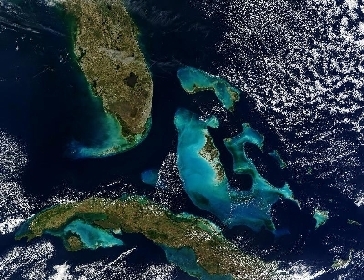Cuba : Environmental Protection And Sustainable Development
- Havana Airport, Cuba
- Culture & Nature

| from $2,600* per person | 9 Days | May |
| Comfort accommodations | Exertion level: 3 | |
| Operator: Global Exchange Reality Tours | 12 people max | |
After the setbacks of the 1990's, caused by the dissolution of the Soviet Union and the tightening of the U.S. Embargo, Cuba's quality of life indices did decline slightly for a few years, but then steadily improved. Denied their former imports of petroleum products and pharmaceuticals, Cuba's 35,000 scientists, operating in 200 research institutes across the island, began to explore indigenous and more sustainable ways to meet their food, medicine and energy needs. Extraordinary innovations in organic agriculture and urban gardens earned Cuban agriculturists the Alternative Nobel Prize/Right Livelihood Award; advances in renewable energy including solar, wind, micro-hydro, biogas, and biomass, and island-wide energy efficiency campaigns earned the Cuban NGO Cuba Solar, the UN Global 500 award; and the development of alternative and traditional health care practices earned Cuba recognition by the UN Development Council, as one of the five most important projects in health care internationally.
Cuba was the first nation to complete its biodiversity census after the Rio Earth Summit in 1992; 22% of its land is officially designated "Protected Areas"; it's coral reefs are healthy (Jacques Cousteau used to say that whenever he was in despair about the state of the world's ocean ecosystems, he thought of Cuba and his hope was rejuvenated); and it is one of the few nations in the world to have increased its percentage of forested land in the past several decades.
Cuba models, for the rest of the world, the possibility of obtaining a high quality of life, on a relatively small national budget, while utilizing low levels of the planet's limited resources. This tiny island nation is showing us a possible way to live simply, healthfully, and sustainably on the Earth.
Loading map, please wait...
Locations visited/nearby
Cuba, Central America
Itinerary
DAY ONE:PM: Arrival in Havana. Check into hotel. Orientation Meeting with tour coordinators.
Welcome dinner with Cuban hosts including representatives of the Foundation for Nature and
Humanity and the Instituto Cubana de la Amistad con los Pueblos.
DAY TWO:
AM: City tour of Havana and Old Havana with noted Cuban urbanist Miguel Coyula of the Group for the
Integral Development of Havana; focus on projects in sustainable development (urban gardens,
farmers’ markets, recycling and environmental clean up, etc ).
Lunch at restaurant in Old Havana.
PM: Continuation of City Tour with focus on Old Havana. Visit Museum of the Revolution or Literacy
Museum.
EVE: Panel discussion with Cuban experts on Cuba’s policies and practices in sustainable social
development: nutritionists, public health officials, community development and social welfare.
DAY THREE:
AM: Tour of Alamar Organoponico in Eastern Havana, the largest organiponico in Havana; meet with
directors and community members.
Lunch at vegetarian restaurant in Alamar.
PM: Meet with Foundation for Nature and Humanity to learn about their program of environmental
education in the greater Havana area. Site visit to school or community project.
EVE: Optional cultural activity.
DAY FOUR:
AM: Drive to Las Terrazas, tour community (artists studios, school, health clinic, community center,
museum on the history of the community). Talk by Tito Nunez, Cuba’s foremost promoter of locallygrown
vegetarian cuisine.
Lunch at Eco Restaurant in Las Terrazas.
PM: Visit with naturalists and specialists in biodiversity in Sierras de Los Rosarios Bio Reserve.
Opportunity for hiking and bird watching.
EVE: CDR (Committee in Defense of the Revolution) meeting and gathering
Over night in Pinar del Rio
DAY FIVE:
AM: Visit rural cooperative farm; talk with managers and workers
Lunch at paladar in Pinar del Rio
PM: Visit sites of permaculture and renewable energy installations in community centers, schools, clinics,
etc. Meet local representatives of the Foundation for Nature and Humanity and Cuba Solar.
Return to Havana. Dinner at hotel.
EVE: Optional cultural activity.
DAY SIX
AM: Meetings with Mario Arrastia Avila of Cuba Solar and CubaEnergia, a department in the Cuban
Ministry of Science, Technology and the Environment for talk on Cuba’s comprehensive energy
efficiency program.
Lunch in neighborhood of Cuban artist Jose Fuster.
PM: Panel discussion with representatives of the Center for Marine Science in Havana (on coastal and
marine environmental protection); and representatives of the Metropolitan Park project of constructed
wetlands and urban permaculture in Havana’s large natural area.
EVE: Optional cultural activity.
DAY SEVEN:
AM: Meetings with Marta Perez Vinas, director of the Department of Traditional and Complementary
Medicine at the Ministry of Public Health. Visits to Traditional Medicine Clinic and Green Pharmacy.
Lunch at restaurant of group’s choice
PM: Visit Martin Luther King Center in the Pogolotti section of the neighborhood of Marianao, and learn
about urban projects in sustainable development (environmental and social).
EVE: Cultural Event, Colmenitas Childrens Theatre performance and talk on their work.
DAY EIGHT:
AM: Visit to Regla and Guanabacoa. Visit museum, cultural center, and projects in sustainable
environmental development.
Lunch in Guanabacoa
PM: Cultural visits or follow up meetings according to professional interest or free time to explore Havana
on your own.
EVE: Farewell dinner with Cuban hosts.
DAY NINE:
AM: Departure for Cancun.
More information from Global Exchange Reality Tours:
- Email this trip page to a friend
-




Comments from Facebook